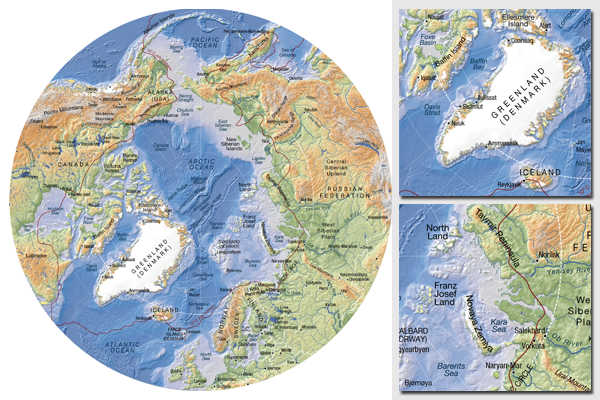The polar regions are far, far away for most people. Do not count me in among 'most people' though. As a Norwegian I practically live in the Arctic. There are only 8 nations that are (partly) situated in the Arctic: Canada, Denmark, Finland, Iceland, Norway, Sweden, Russia and USA Several countries claim rights in Antarctica, which is regulated by the Antarctic Treaty . Sometimes we talk about a third pole, namely The Himalayas. Common for all three regions are remoteness and inaccessibility.

Courtesy of Nordpil. Map of the Arctic.
Polar exploration is deeply founded in the Norwegian identity, yet I have no difficulty understanding why people outside polar regions ask themselves What's in it for me? How can we defend using so much resources and efforts on science constrained to these remote regions?
This week, the 4th* International Polar Year (2007-2008) will be summarized, analyzed and future follow-up plans developed at the biggest polar gathering ever: the IPY Oslo Science Conference.

Photo: John Petter Reinertsen/ Samfoto
CEO of the The Research Council of Norway, Arvid Hallén greets HRH Crown Prince Haakon. Several
honorables support the IPY Oslo Science Conference. Prince Albert of Monaco visited the conference's 1st day 8th June 2010
At this point it is a bit early to say whether the results from the 2007-2008 IPY will be equally important as the last of this kind of scientific feast, the International Geophysical Year (IGY) in 1957-1958 turned out to be. IGY coincided with or marked the start of the space race and the birth of space geodesy. (Vanguard 2, see video), no small achievement on any scale or from any perspective, and can definitely be defended when it comes to the use of resources versus societal benefit.
I will be attending the IPY Oslo Science Conference keeping a keen eye on the space based polar science. For numerous reasons, there were very few satellites covering the arctic and antarctic regions. I will also look for examples of inter-disciplinary research and apply a special twist to the information. By the end of the conference I hope I will have answered the question What's in it for YOU? through my daily reports and articles. If you are not satisfied with the reasons presented in the official IPY documents, that is.
* The former polar years where in 1882-83, 1932-33, 1957-58 (International Geophysical Year was modeled after the two previous polar years and included polar activities).


